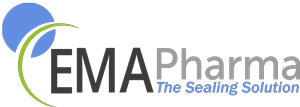Share this
Quality Risk Assessment for Pharmaceutical Aluminum Seals
by Ewan on Sep 28, 2023 5:21:35 PM
Every component in pharmaceutical applications plays an important role in ensuring the safety, efficacy, and quality of the final product to eventually secure patient safety. In this article, we will provide a thorough quality risk evaluation associated with the aluminum seal in particular, which is the final component that seals glass vials and bottles. It is essential that pharmaceutical professionals, including quality control experts and project managers, perform a comprehensive quality risk evaluation for each pharmaceutical component.
The Importance of Aluminum Seals to Secure Patient Safety
The aluminum seal serves as the primary barrier between the product inside the vial and the external environment. The seals are responsible for maintaining sterility and preventing contamination of the pharmaceutical product. Additionally, aluminum seals aid in tamper-evident packaging, providing an added layer of security as it will be visible to both pharmaceuticals but also consumers if the product has been tampered with before use.
Different Designs on the Aluminum Seal
When assessing a quality risk evaluation associated with aluminum seals for pharmaceutical applications, one should consider the different designs of the aluminum seal as different seals might be vulnerable to different risks. In this article, we will provide a general approach that can be applied to various designs, however, it is essential to evaluate if this list is comprehensive or not, depending on the design of the seal. Most commonly, manufacturers provide three different designs of the aluminum cap:
- Center hole cap
- Complete tear-off cap
- Center tab cap

There are also alternatives offered to the aluminum caps that combine both aluminum and plastic in one seal, including the push-off caps and push-tear-off caps. However, in this article, we will focus on the seals that are based on aluminum only.
Quality Risk Evaluation Steps
It is imperative to establish clear documentation of the quality risk assessment process, recording all findings, test results, and decision-making. The following steps can be used when assessing future quality risk evaluations on aluminum seals:
1. Select the Appropriate Material for the Aluminum Seals
The journey of ensuring the quality of aluminum seals starts with the selection of material. There are two components that go into selecting material for this particular seal: the aluminum alloy and liner material. Each project manager should select the material that is the most compatible for their specific product. Consider factors such as strength, compatibility with the product and sealing process, and resistance to corrosion. Aluminum seals are also offered in a range of diameters and colours. Select the design that will ensure compatibility with the vial and product, as well as the sealing process.
2. Conduct Compatibility Tests with the Pharmaceutical Product and Sealing Process
Upon selecting the material, it is essential to conduct compatibility testing to ensure that the chosen aluminum seal is compatible with the drug protection to avoid any adverse interaction. Assess whether any substances from the seal can be extracted into the drug product or migrate from the seal into the product. Consider also examining the aluminum seals' resistance to any chemicals or reactivity with the product. All potential chemical interactions should be thoroughly addressed and evaluated to ensure the pharmaceutical product quality, safety, and efficacy.
3. Ensure Container Closure Integrity
Evaluating the container closure integrity is one of the most important steps in the quality risk assessment. The closure integrity can be tested in container closure integrity tests (CCIT) that evaluate the adequacy of the container closure system to maintain a sterile barrier against potential contamination. The closure integrity can also be tested through visual inspection that can identify visual defects such as dents, wrinkles, or visible contamination. Consider validating the sealing process to confirm consistency on proper closures without any leaks or defects in temperature, pressure, and time.

4. Stay within Regulatory Compliance
Pharmaceutical packaging is knowingly heavily regulated, which includes the aluminum seal. Ensure that the selected seal meets the regulatory requirements and guidelines. Establish if relevant manufacturers provide quality assurances with work procedures based on compliance such as cGMP and ISO15378 certification. If seals do not meet compliance standards, it can lead to serious consequences on patient safety and the company will face regulatory actions as well as legal repercussions.
5. Evaluate Your Supplier Qualification
Project managers should work closely with suppliers who can provide high-quality seals and meet production requirements. For a successful project, it is necessary to maintain a healthy supplier relationship that can provide a reliable supply. When selecting a supplier, focus on a partner that can provide the full package rather than being product-centric only. Some factors to consider for a successful supplier relationship include:
- Concrete quality assurances
- Employee expertise
- Customer intimacy
- Flexibility and adaptability
- Location of supplier (proximity)
- Shared business values
- Environmental consideration
- Possibility of multiple product lines
6. Conduct Ongoing Quality Controls
Do not miss out on implementing robust quality control measures throughout the manufacturing and packaging process. This includes in-process inspections, measurements, and functional testing to confirm the seal's integrity. The controls should not be a one-time proceeding but rather a continuous routine to ensure quality assurance. Not only is ongoing quality control of pharmaceutical applications a necessity to ensure patient safety but it contributes to consistency and improvements in the manufacturing process. It also improves traceability, risk mitigation, and prevents potential recalls.
Conclusion
The quality risk associated with aluminum seals in pharmaceutical applications should not and cannot be underestimated as the seals are a critical component in ensuring patient safety. By following the steps outlined in this article, pharmaceutical professionals and project managers can perform a thorough quality risk evaluation and take proactive measures to mitigate potential risks and issues. Ultimately, the commitment to quality, regulatory compliance, and continuous monitoring and controls will contribute to the safe and effective packaging of pharmaceutical products, protecting both patients and the reputation of pharmaceutical companies.

No Comments Yet
Let us know what you think